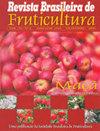柑桔不同品种精油产量的研究等
IF 0.9
4区 农林科学
Q4 HORTICULTURE
引用次数: 0
摘要
柑橘类水果加工后产生的残留物可用于提取精油。因此,这项工作的目的是评估30个橙子品种的已探明油的组成,产量和质量,作为更好地利用其残留物的替代品。果皮被粉碎,并在克莱文杰式中进行加氢蒸馏。样本采用完全随机设计(DIC),分析结果采用方差分析、主成分分析和层次聚类分析。其中,瓦伦西亚IAC(5.57%)、Pera DP 06(4.75%)、Hamlin 20(4.58%)和Pera DP 25(4.28%)的精油产量增幅最大。瓦伦西亚IAC有潜力从每吨橙子中提取7.24公斤精油。柠檬烯占总油分的93.18% ~ 99.61%,是各品种中含量最高的化合物。有些品种没有描述二级化合物或不止一种。这些成分具有很强的抗氧化性,在生产化妆品、个人护理产品、顺势疗法、帮助胃肠道疾病等方面具有重要作用。可以得出这样的结论:即使经过相同的干燥和榨油过程,这些品种也具有不同的化合物和油,这是每个品种的内在特征。本文章由计算机程序翻译,如有差异,请以英文原文为准。
Yield of essential oil from varieties of Citrus sinensis (L.) Osbeck
Abstract Residues are generated after the processing of citrus fruits and can be used for essential oil extraction. Thus, the objective of this work was to evaluate the composition, yield, and quality of the proven oil of 30 orange varieties, as an alternative for the better use of its residues. The peels were crushed and subjected to hydrodistillation in a Clevenger-type. The samples were submitted to an Entirely Randomized Design (DIC) and the results were analyzed in Analysis of Variance, Principal Component Analysis, and Hierarchical Cluster Analysis. The greatest gains in essential oil were yielded by the varieties Valencia IAC (5.57%), Pera DP 06 (4.75%), Hamlin 20 (4.58%), and Pera DP 25 (4.28%). Valencia IAC has the potential to extract up to 7.24 kg of essential oil per ton of orange. Limonene represents 93.18 to 99.61% of the oil components, being the major compound among all varieties. Some varieties did not describe secondary compounds or more than one. These components are highly antioxidant and of great importance in the production of cosmetics, personal care products, homeopathy, help gastrointestinal diseases, among other uses. It is possible to conclude that the varieties have different compounds and oils, even when submitted to the same drying and oil extraction process, being the intrinsic characteristics of each variety.
求助全文
通过发布文献求助,成功后即可免费获取论文全文。
去求助
来源期刊
CiteScore
1.50
自引率
20.00%
发文量
34
审稿时长
4-8 weeks
期刊介绍:
The Revista Brasileira de Fruticultura (RBF) publishes technical articles and scientific communications in the area of fruit crops, referring to results of original searches and unpublished papers in Portuguese, Spanish or English, and 1 or 2 reviews per edition, of invited authors.

 求助内容:
求助内容: 应助结果提醒方式:
应助结果提醒方式:


